Philipp Schilk
i-CardiAx: Wearable IoT-Driven System for Early Sepsis Detection Through Long-Term Vital Sign Monitoring
Jul 31, 2024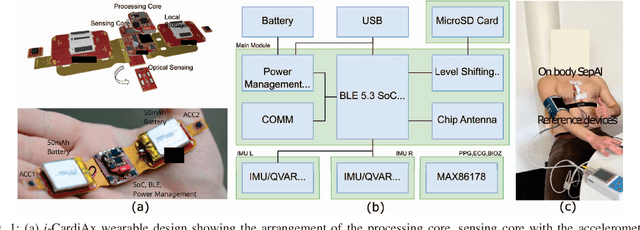

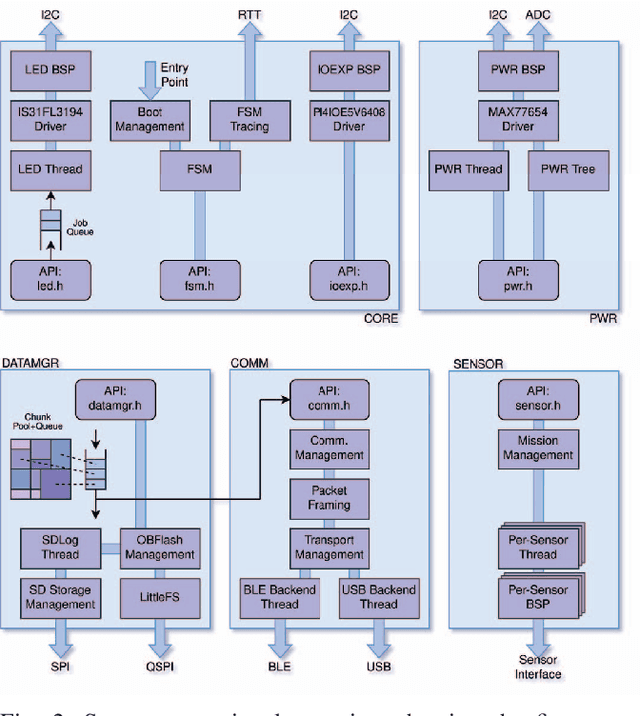

Abstract:Sepsis is a significant cause of early mortality, high healthcare costs, and disability-adjusted life years. Digital interventions like continuous cardiac monitoring can help detect early warning signs and facilitate effective interventions. This paper introduces i-CardiAx, a wearable sensor utilizing low-power high-sensitivity accelerometers to measure vital signs crucial for cardiovascular health: heart rate (HR), blood pressure (BP), and respiratory rate (RR). Data collected from 10 healthy subjects using the i-CardiAx chest patch were used to develop and evaluate lightweight vital sign measurement algorithms. The algorithms demonstrated high performance: RR (-0.11 $\pm$ 0.77 breaths\min), HR (0.82 $\pm$ 2.85 beats\min), and systolic BP (-0.08 $\pm$ 6.245 mmHg). These algorithms are embedded in an ARM Cortex-M33 processor with Bluetooth Low Energy (BLE) support, achieving inference times of 4.2 ms for HR and RR, and 8.5 ms for BP. Additionally, a multi-channel quantized Temporal Convolutional Neural (TCN) Network, trained on the open-source HiRID dataset, was developed to detect sepsis onset using digitally acquired vital signs from i-CardiAx. The quantized TCN, deployed on i-CardiAx, predicted sepsis with a median time of 8.2 hours and an energy per inference of 1.29 mJ. The i-CardiAx wearable boasts a sleep power of 0.152 mW and an average power consumption of 0.77 mW, enabling a 100 mAh battery to last approximately two weeks (432 hours) with continuous monitoring of HR, BP, and RR at 30 measurements per hour and running inference every 30 minutes. In conclusion, i-CardiAx offers an energy-efficient, high-sensitivity method for long-term cardiovascular monitoring, providing predictive alerts for sepsis and other life-threatening events.
Earable and Wrist-worn Setup for Accurate Step Counting Utilizing Body-Area Electrostatic Sensing
Jul 08, 2024Abstract:Step-counting has been widely implemented in wrist-worn devices and is accepted by end users as a quantitative indicator of everyday exercise. However, existing counting approach (mostly on wrist-worn setup) lacks robustness and thus introduces inaccuracy issues in certain scenarios like brief intermittent walking bouts and random arm motions or static arm status while walking (no clear correlation of motion pattern between arm and leg). This paper proposes a low-power step-counting solution utilizing the body area electric field acquired by a novel electrostatic sensing unit, consuming only 87.3 $\mu$W of power, hoping to strengthen the robustness of current dominant solution. We designed two wearable devices for on-the-wrist and in-the-ear deployment and collected body-area electric field-derived motion signals from ten volunteers. Four walking scenarios are considered: in the parking lot/shopping center with/without pushing the shopping trolley. The step-counting accuracy from the prototypes shows better accuracy than the commercial wrist-worn devices (e.g.,96% of the wrist- and ear-worn prototype vs. 66% of the Fitbit when walking in the shopping center while pushing a shopping trolley). We finally discussed the potential and limitations of sensing body-area electric fields for wrist-worn and ear-worn step-counting and beyond.
In-Ear-Voice: Towards Milli-Watt Audio Enhancement With Bone-Conduction Microphones for In-Ear Sensing Platforms
Sep 05, 2023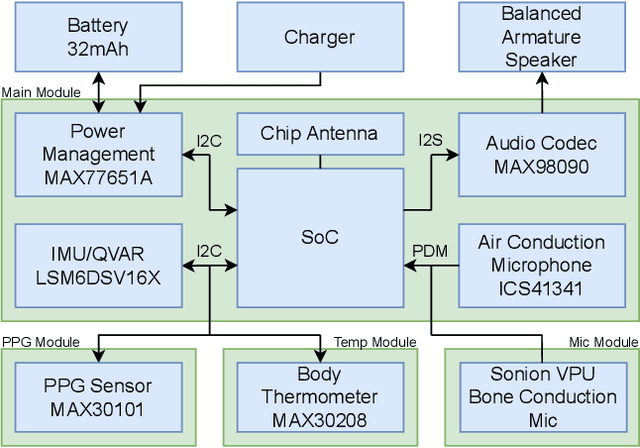
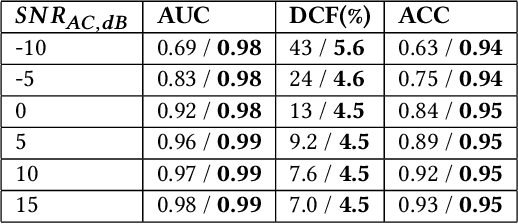
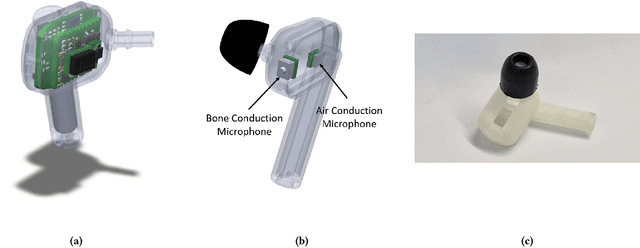
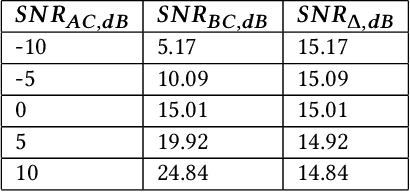
Abstract:The recent ubiquitous adoption of remote conferencing has been accompanied by omnipresent frustration with distorted or otherwise unclear voice communication. Audio enhancement can compensate for low-quality input signals from, for example, small true wireless earbuds, by applying noise suppression techniques. Such processing relies on voice activity detection (VAD) with low latency and the added capability of discriminating the wearer's voice from others - a task of significant computational complexity. The tight energy budget of devices as small as modern earphones, however, requires any system attempting to tackle this problem to do so with minimal power and processing overhead, while not relying on speaker-specific voice samples and training due to usability concerns. This paper presents the design and implementation of a custom research platform for low-power wireless earbuds based on novel, commercial, MEMS bone-conduction microphones. Such microphones can record the wearer's speech with much greater isolation, enabling personalized voice activity detection and further audio enhancement applications. Furthermore, the paper accurately evaluates a proposed low-power personalized speech detection algorithm based on bone conduction data and a recurrent neural network running on the implemented research platform. This algorithm is compared to an approach based on traditional microphone input. The performance of the bone conduction system, achieving detection of speech within 12.8ms at an accuracy of 95\% is evaluated. Different SoC choices are contrasted, with the final implementation based on the cutting-edge Ambiq Apollo 4 Blue SoC achieving 2.64mW average power consumption at 14uJ per inference, reaching 43h of battery life on a miniature 32mAh li-ion cell and without duty cycling.
 Add to Chrome
Add to Chrome Add to Firefox
Add to Firefox Add to Edge
Add to Edge